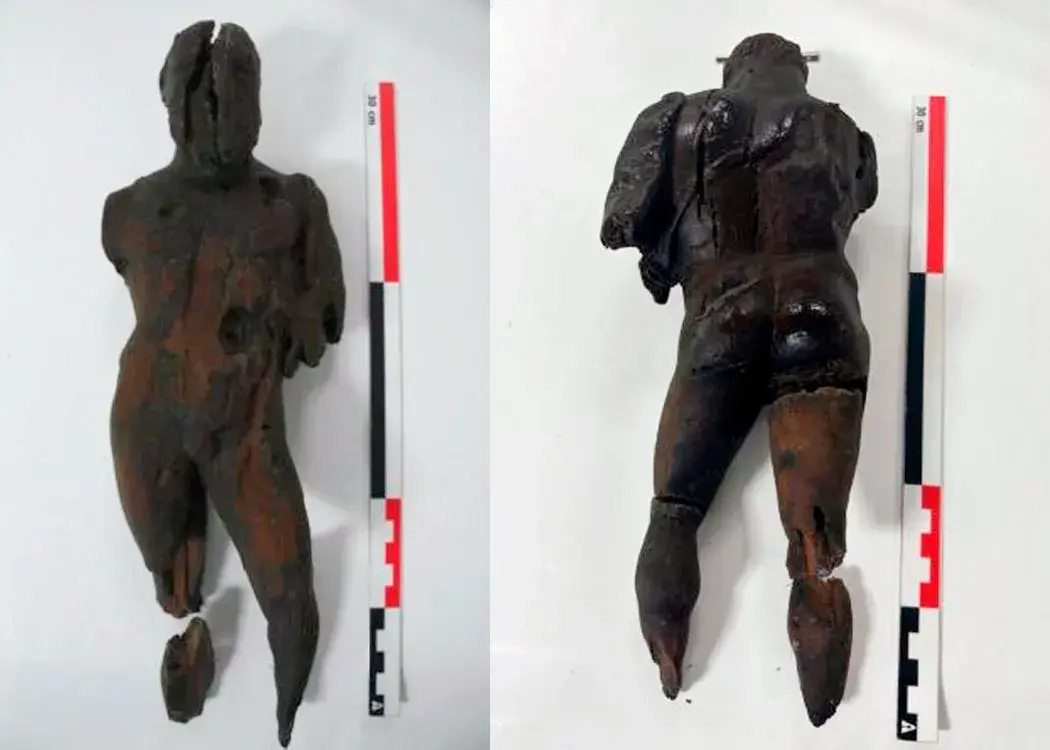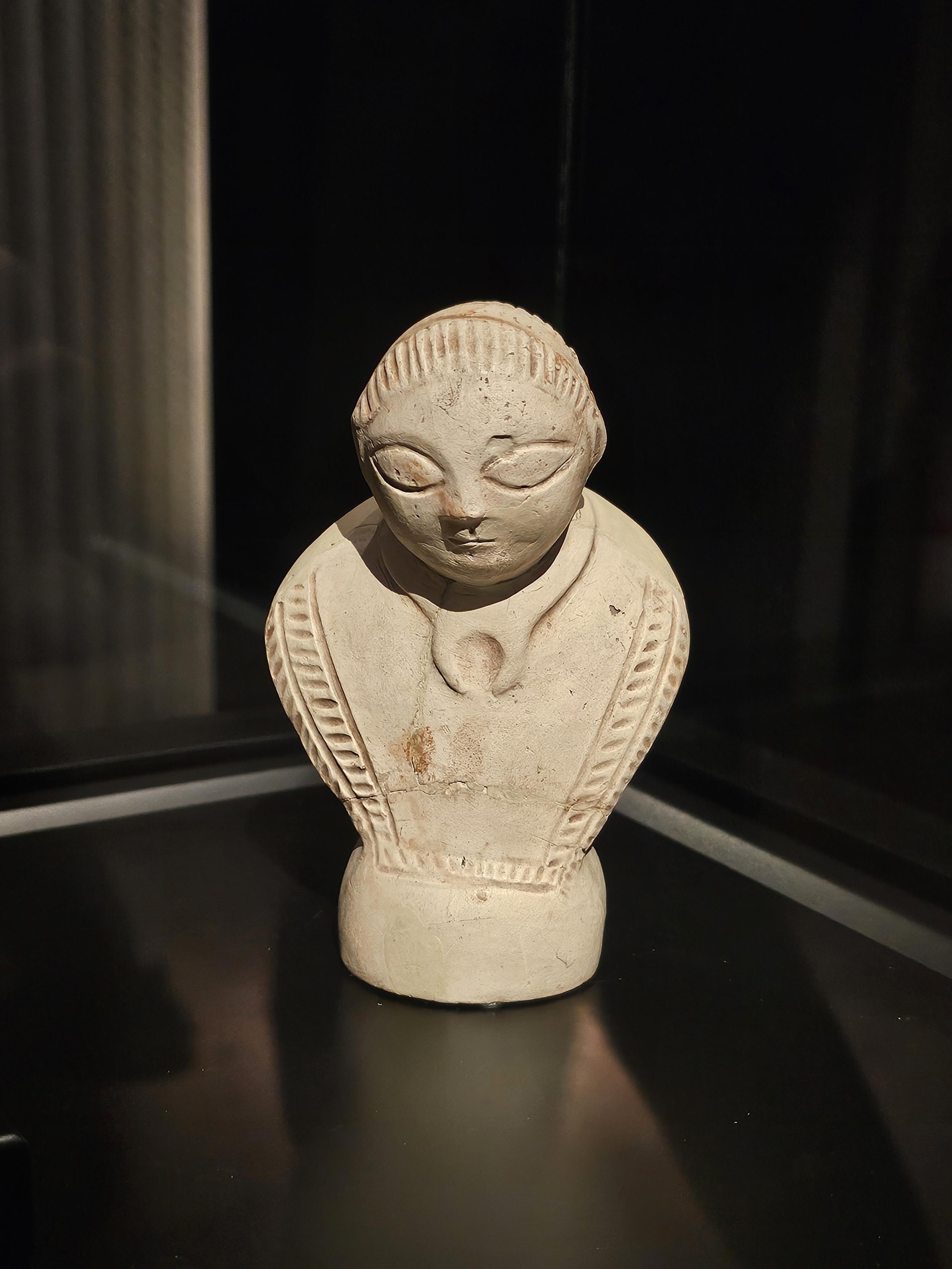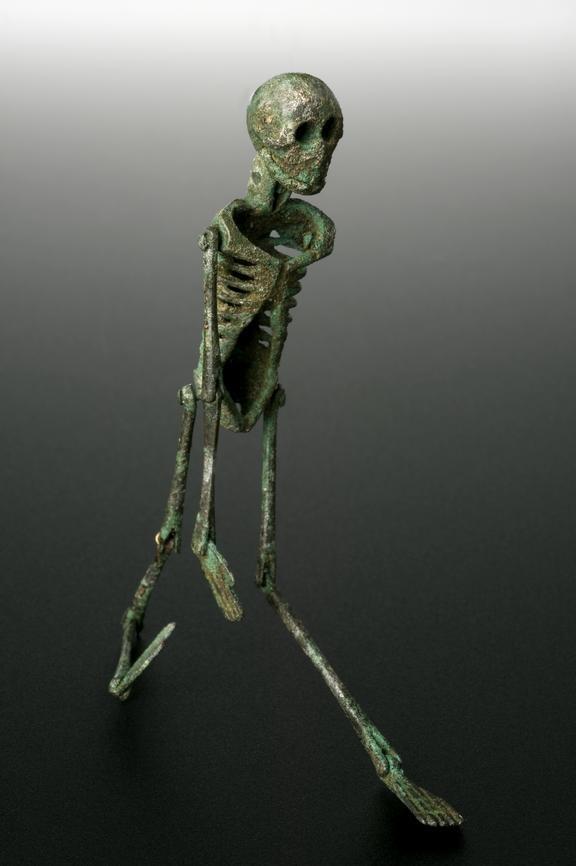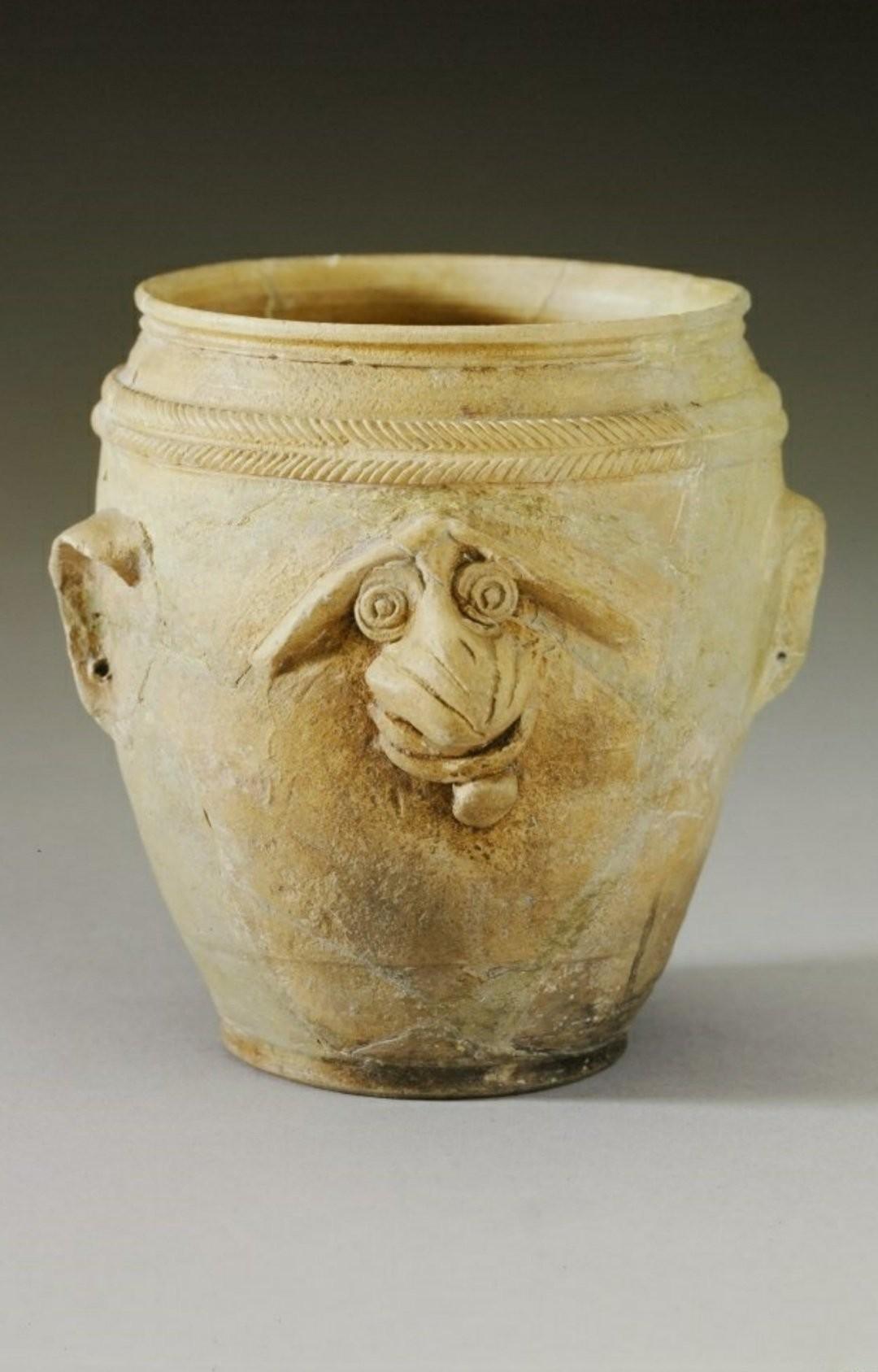An extraordinary discovery was made in Ibiza: a 30-centimeter wooden sculpture representing Hercules. Considering the scarcity of wooden sculptures preserved from the Roman era, this discovery is truly remarkable.
The figure was found in a Roman well that was later reused as a refuse pit. Alongside the sculpture, fragments of wood, a leather sole, and plant remains were recovered.
An extraordinary discovery was made in Ibiza: a 30-centimeter wooden sculpture representing Hercules. Considering the scarcity of wooden sculptures preserved from the Roman era, this discovery is truly remarkable.
The figure was found in a Roman well that was later reused as a refuse pit. Alongside the sculpture, fragments of wood, a leather sole, and plant remains were recovered.
A terracotta bust of a girl wearing a crescent-shaped pendant, known as a lunula, which was typically worn by females.
Lunula pendants were believed to possess apotropaic qualities, meaning they were intended to ward off evil. The moon was a symbol associated with women, but men also utilized items decorated with crescent designs too.
Found in Trier, 2nd/3rd c. AD.
Currently on display at the Major State Exhibition "Marcus Aurelius", Landesmuseum Trier.
📷 me
A terracotta bust of a girl wearing a crescent-shaped pendant, known as a lunula, which was typically worn by females.
Lunula pendants were believed to possess apotropaic qualities, meaning they were intended to ward off evil. The moon was a symbol associated with women, but men also utilized items decorated with crescent designs too.
Found in Trier, 2nd/3rd c. AD.
Currently on display at the Major State Exhibition "Marcus Aurelius", Landesmuseum Trier.
📷 me
Halloween is near! It's time to post this marvellous articulated Roman skeleton, presumably meant to be a reminder to enjoy life to the fullest, since pleasure ends irrevocably with death. In Petronius’ Satyricon, the host of a dinner party brings out a small skeleton with moveable joints and poses it in several ways. Reciting a poem, he reminds his guests of their mortality and that life should therefore be enjoyed.
📷 Science Museum London
Halloween is near! It's time to post this marvellous articulated Roman skeleton, presumably meant to be a reminder to enjoy life to the fullest, since pleasure ends irrevocably with death. In Petronius’ Satyricon, the host of a dinner party brings out a small skeleton with moveable joints and poses it in several ways. Reciting a poem, he reminds his guests of their mortality and that life should therefore be enjoyed.
📷 Science Museum London
The week just started, and we already need a timeline cleanse....
A #Roman pot with ears and a funny little face (it looks like Shaun the Sheep). Found in a burial in the necropolis of Giubiasco, Switzerland 2nd century AD.
📷 Schweizerisches Nationalmuseum
Children loved to play with toys in #Roman times too: some 1,800 years ago, a child in Cologne was buried with a terracotta horse with a rider on wheels. It was certainly a much-loved which the child was also supposed to play with in the afterlife.
📷 Römisch-Germanisches Museum Köln
The week just started, and we already need a timeline cleanse....
A #Roman pot with ears and a funny little face (it looks like Shaun the Sheep). Found in a burial in the necropolis of Giubiasco, Switzerland 2nd century AD.
📷 Schweizerisches Nationalmuseum
Children loved to play with toys in #Roman times too: some 1,800 years ago, a child in Cologne was buried with a terracotta horse with a rider on wheels. It was certainly a much-loved which the child was also supposed to play with in the afterlife.
📷 Römisch-Germanisches Museum Köln
Fascinating world of ancient #glass: This magnificent #Roman #fish-shaped flask was found during the excavation of a storeroom in Begram/Afghanistan. It was probably made in a workshop at Alexandria/Egypt, dating 1st/2nd century AD. Begram was a major trading city at the Silk Road, the flask was found in one of two storerooms of a merchant, filled with luxury good.
National Museum of Afghanistan
Fascinating world of ancient #glass: This magnificent #Roman #fish-shaped flask was found during the excavation of a storeroom in Begram/Afghanistan. It was probably made in a workshop at Alexandria/Egypt, dating 1st/2nd century AD. Begram was a major trading city at the Silk Road, the flask was found in one of two storerooms of a merchant, filled with luxury good.
National Museum of Afghanistan
A 2000-year-old Roman bridge has been discovered in Aegerten, Switzerland. Over 300 oak piles were unearthed, which have been preserved in the groundwater. Based on current dendrochronological analysis, the earliest construction dates back to approximately 40 BC, while the most recent parts are from 369 AD.

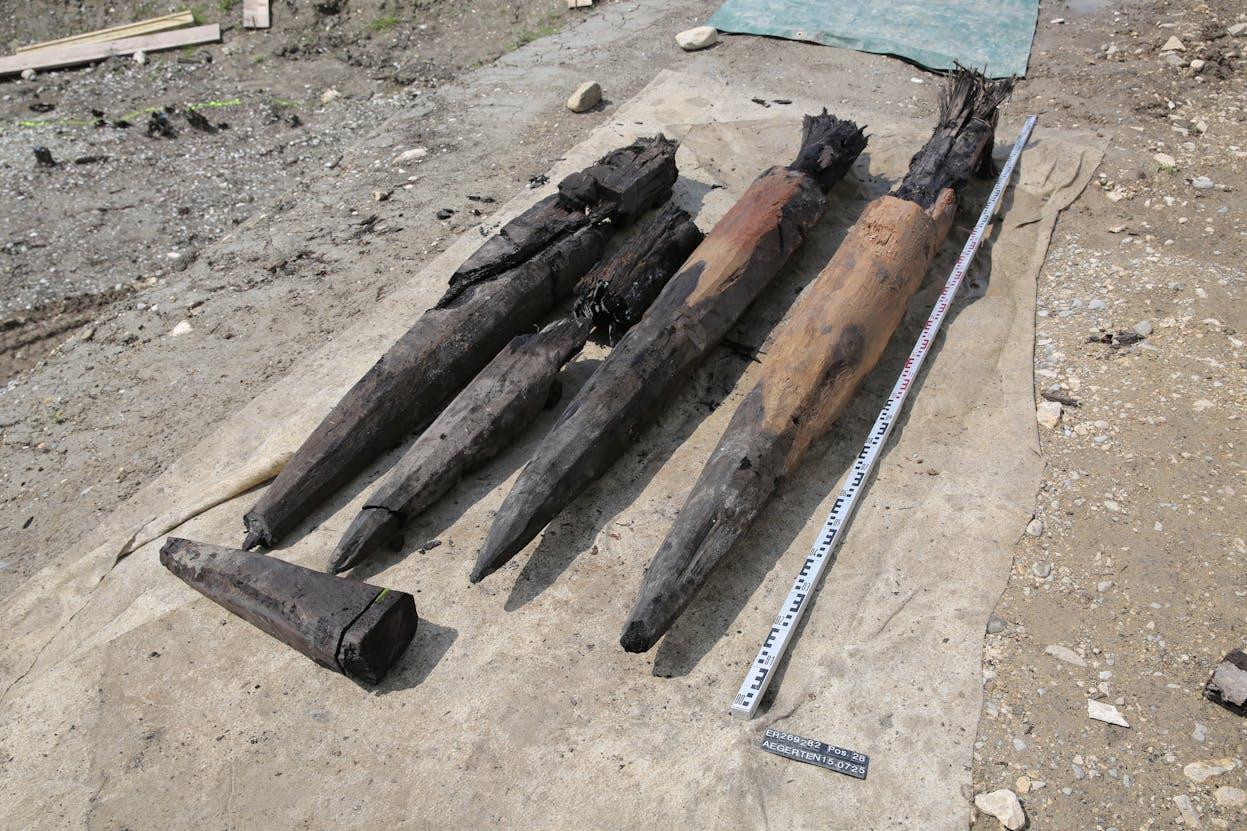
A 2000-year-old Roman bridge has been discovered in Aegerten, Switzerland. Over 300 oak piles were unearthed, which have been preserved in the groundwater. Based on current dendrochronological analysis, the earliest construction dates back to approximately 40 BC, while the most recent parts are from 369 AD.


Fascinating world of ancient #glass: this absolutely stunning #Roman ribbed bowl was unearthed fully intact with little to no wear during excavations in Nijmegen, The Netherlands.
Monochrome ribbed bowls made of brightly coloured glass were very popular throughout the Roman empire in the 1st century AD.
They were also exported beyond the empire’s eastern frontier and have been found in Iran, Afghanistan, Pakistan, and India.
📷 me

